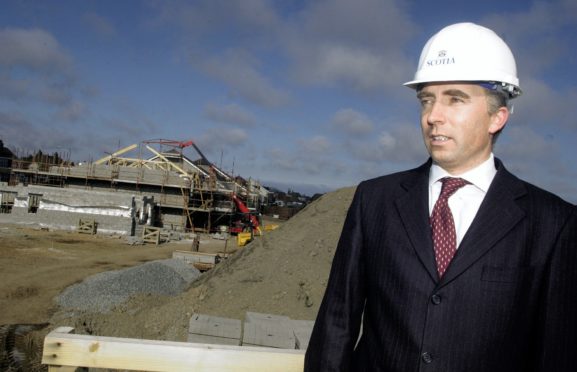North-east housebuilder Scotia Homes has changed hands less than six months after the death of its founder.
The Ellon firm said yesterday it had been acquired by Camlin Group, a joint venture owned by property entrepreneurs Bruce Linton and David Cameron, for an undisclosed sum. The size of Camlin’s majority stake was also undisclosed.
Scotia was founded in 1990 by Bill Bruce, who died in November.
As of then, the firm was 58%-owned by managing director Martin Bruce, the founder’s son, and family.
Other shareholders included Michael Zanre, whose family founded Peterhead-based fish and chip shop chain Zanres.
Mr Bruce, who has retained a minority shareholding and will continue to head up the firm as MD, said sale talks with Camlin started several months before lockdown.
He added: “David and Bruce have a huge amount of experience and knowledge of the property market in Scotland.
“It is reassuring they are taking a medium to long-term view of our business, and we are delighted to have them on board as our new owners.
“As well as their undoubted property experience and financial backing, David and Bruce will bring access to both strategic and landbank, with planning consent across the Highland, Tayside and Angus regions.
“This will enable the business to accelerate its geographic diversification and reduce its concentration risk to Aberdeen and the north-east, where the market is expected to remain challenging following the dramatic fall in oil and gas prices.”
Scotia employs about 190 people, and has current and future developments in Aberdeen, Brechin, Elgin, Ellon, Forfar, Insch, Inverness, Kintore, Laurencekirk, Nairn, Newburgh and Peterhead.Its last published accounts for the 12 months to April 30 2019 showed a 9% year-on-year rise in pre-tax profits to £3.55 million, a slight rise in revenue to £35.4m, net assets of £28.65m and no bank debt.
